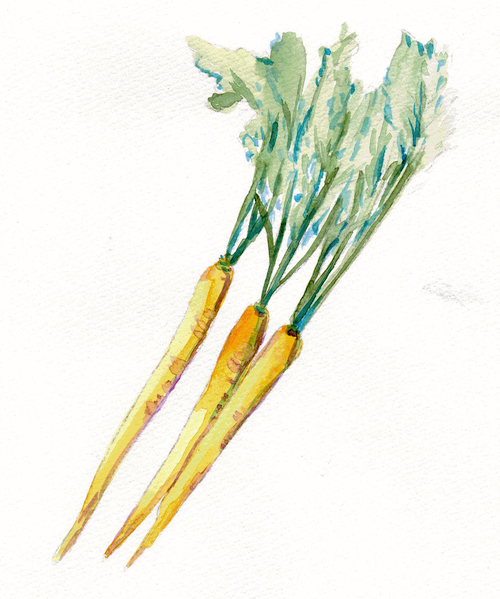
A Refreshing Summer Vegetable Dish
Something my grandmother loves to do is send lots of food. Her most recent gift was silky tofu, and much in line with her personality, she sent over a whole box with over 50 packs. Inspired by her gesture, I’ve been thinking of ways to enjoy tofu that is more than topping it on top of salads or putting cubes into miso soup– although, this is a very practical and easy way to add more plant-based protein. Tofu is a good source of iron and calcium, and contains trace amounts of magnesium, copper, zinc and vitamin B1, so by all means, throw tofu into your soups and onto salads!
But I decided that the perfect way to enjoy silky tofu in the summer is chilled, topped with a hearty serving of hijiki (a type of sea vegetable), carrots, onion, and edamame.
If you didn’t grow up eating sea vegetables, they can seem kind of strange, but hijiki is incredibly rich in calcium, iron, magnesium, and vitamin K. Although it might not look it, it’s still a leafy green vegetable, and is very high in dietary fiber and great for improving gut digestive health.
How Easy is It To Make?
It’s super easy. It all takes but 10 minutes or less to put together, and if you make the hijiki topping in bulk, you can use it throughout the week so it’s great for meal-prepping teishoku style meals 😊
Some notes before cooking:
- Hijiki takes 30 minutes to rehydrate, as they are usually sold dried. Make sure to plan for this!
- Make sure to not skimp on the small steps– Letting the onion sit in water to remove acidity and bitterness, blanching the carrots to remove rawness. Although these seem like skippable actions, they’re crucial in making the vegetables taste really fantastic and bringing out their natural flavors. Especially when it comes to uncooked foods, these steps make a huge difference.
- If you choose to make it in bulk, the hijiki topping will last about 3-5 days in the refrigerator. Use it throughout the week as meal prep!

Gathering Your Ingredients:
4 servings
- 10g dried hijiki
- Make sure to rehydrate your hijiki beforehand, which takes approx. 30 minutes– it will double to triple in volume!
- 1/4 to 1/2 onion (thinly sliced, julienned)
- 1/2 to 1 medium carrot (thinly sliced, julienned)
- 50g cooked and shelled edamame
- Silky tofu, 1 pack (about 350g)
- 2 tbsp Japanese noodle soup base (also called mentsuyu)
- 1 tbsp sugar
- 1.5 tbsp rice vinegar
- 1.5 tbsp sesame oil
Directions:
- Prep your vegetables!
- Rehydrate the hijiki
- Julienne the carrots
- Julienne the onions
- Take a bowl of cold water and put in your onions
- This is an important step for removing the acidity and bitterness
- Boil water, and blanch the hijiki and carrots
- Blanching: Drop in the hijiki and carrots for about 30 seconds to 1 minute and then drain with a mesh strainer bowl (a colander may work, if it is fine enough– some of them might be too big.)
- Rinse the carrots and hijiki under cold water
- Rinsing the hijiki is important because this removes some bitterness from the vegetable
- Cold water also quickly cools the vegetables down and stops the cooking
- Drain the onions in the same strainer
- Mix the soup base, sugar, rice vinegar, and sesame oil together to create the dressing
- The amounts listed are standard– you can make it less sweet by using less sugar, more salty by adding more soup base, etc. Adjust to your own preference!
- Mix the vegetables (hijiki, carrots, onion, edamame) and the dressing together in a bowl
- Slice the tofu into fourths, serve onto small plates. Place a generous amount of the hijiki topping on top, and you’re done!
Not Ready for Hijiki? No Worries!
Chilled tofu is an incredibly versatile and simple way to add plant-based protein into your diet, and can be easily enhanced with different toppings, with hijiki being just one of them. You can choose to omit the hijiki and replace it with a different sea vegetable, add in different beans, or toss in some more dashi– make the topping into something you love to eat and want to introduce into your diet again. Once you find your perfect balance, make it bulk, and make it a part of your teishoku meals as an easy way to add more vegetables and healthy plant-based foods into your diet.
The absolute key to healthy eating is enjoying the foods you eat, and making it feel less like a chore and more of something you enjoy. Sustained, good health only comes with consistency, and we can only be consistent in the healthy habits we’re willing to carry for the rest of our lives. So find the vegetables you love, and eat more of what brings you joy.


If you enjoyed this recipe, please let me know at kokumura@kakikata.space! Would love to hear your comments and answer any questions about vegetable-based Japanese meal-prepping. My goal is to share ideas on food, health, and Japanese lifestyle to help others in their own journey to enrich their own well-being.
Warm regards, Kaki 😊